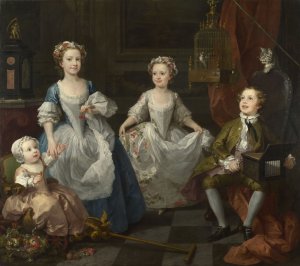Every family has its black sheep and in our family, it is William Cunningham Cunninghame Graham of Gartmore and Finlaystone (1775 – 1845), who is known by a number of soubriquets: “Bad Willie”, “The Runaway Laird” and “The Swindler”.
Born into a wealthy family and given every advantage, William was described as “a person of considerable accomplishments” who “although he possessed a love for the fine arts, it was in the more imitative and mechanical ones that he excelled”, being “without rival at turning the lathe”. And, indeed, he left some very fine ivory pieces, including a chess set with which my grandfather and I used to play our coffee-house games.
In his youth, William fell in with the Prince Regent’s set becoming an inveterate gambler. He squandered the family art collection and the estates he had inherited (hence, “Bad Willie”) and by 1828 he had been forced to flee to the continent to escape his creditors (earning him the epithet of “Runaway Laird”). But it is how he came to be known as “The Swindler” that is the most interesting part of his story.
Having lived briefly in Brussels and Tours, Bad Willie moved to Florence in 1832 with his second wife, Janet, their son Alexander and their daughters Susan and Margaret. He was joined a couple of years later by his stepson, Allan George Bogle, a lieutenant in the Royal Navy, who had been on half-pay for about two years.
Bad Willie made his living in Florence by mechanically reproducing the rare engravings of artists such as Rafael Morghen, Domenichino and Guido Reni with great genius by use of a machine of his own design. It was there that he fatefully made the acquaintance of the Marquis de Bourbel, a schemer, who had married an English heiress, and was now plotting to swindle the bankers Glyn & Co out of £1,000,000 by means of forged letters of credit.
Bad Willie was clearly at the heart of the plot, as was his stepson, whom he helped to enter into a partnership with two respected gentlemen of commerce to form a new bank “Bogle, Kerritch & Co, whose business rapidly grew to be highly profitable thanks to Mr Kerritch’s business contacts. In 1839, Bad Willie introduced the Marquis de Bourbel to Bogle, Kerritch & Co as an investor. But that was not his main contribution to the plot. It was Bad Willie’s particular skill and his tracing machine that De Bourbel wanted so as to mechanically forge to perfection the signatures of Glyn, Hallifax, Mills and Co for the faked letters of credit.
The plot moved on apace when De Bourbel went to London where he encountered an old friend, another gambler of good family, the Baron d’ Arjuzon, who gladly joined the scheme. Together they managed to procure the same paper Glyn & Co used for their letters of credit and then in January 1840 obtained a genuine letter of credit from them from the strong box of Bogle Kerritch & Co. of which Bogle was the custodian.
Another of the band, calling himself Comte de Paindry, tested his forged letter of credit by presenting it at Bogle, Kerritch & Co and received £200. However, he returned the money the following day claiming that a shopkeeper had cast doubt on the authenticity of the letter. He stated that rather than have his honourable name brought into question he would rather cancel the transaction, which the bank did, noting on the letter that it had been done at “the request of the bearer.” This had the benefit of allaying suspicion and reassuring other lenders.
Once they had their forged letters, 6 of the conspirators travelled in pairs to different countries under assumed names to start presenting their letters on the same day, 19th April. At first, all went well and they were able to draw large sums, but as is often the case, they got greedy. D’Arjuzon successfully withdrew £750 in Brussels, but his companion, Perry (alias Ireland), was refused a further £750 in Antwerp the following day as the banker was suspicious that another advance was needed so soon and contacted the police. Perry was arrested on the Ostend Ferry fleeing the country, which news caused the rest of the gang to decamp in great haste.
Nonetheless, they had managed to defraud various banks in Italy, Belgium, France and the Rhineland of the vast sum of £10,700 6s (about £1.22 million in today’s money) in just 6 days. Surprisingly, none of the principal conspirators suffered any serious consequence. Bad Willie’s family were not so fortunate.
The Times had published a letter on 26th May from one of their correspondents, Joseph Lawson, in which the fraudsters had been named, including Bad Willie, his son Alexander and his stepson, Allan Bogle.
Bogle sued Lawson for defamation of character. However, the evidence of his involvement was such that the jury awarded him the paltry damages of just one farthing, and, as the judge refused to certify, he had to bear all of his legal costs. His reputation and finances ruined, he died 10th April, 1843 in Westminster.
According to The Times, Alexander, who was described as a “debauched and dissolute young man”, was living under an assumed name in France “in great want and misery”, when he died of an infectious disease in a nursing home near Paris, less than a year after the scandal. He was just 23 years of age.
Bad Willie was arrested in Florence – probably having returned to try and destroy his machine – and then expelled from the Grand Duchy of Tuscany with a ban from ever returning. He eventually made his way back to London, where he died some five years later without ever facing any punishment.

